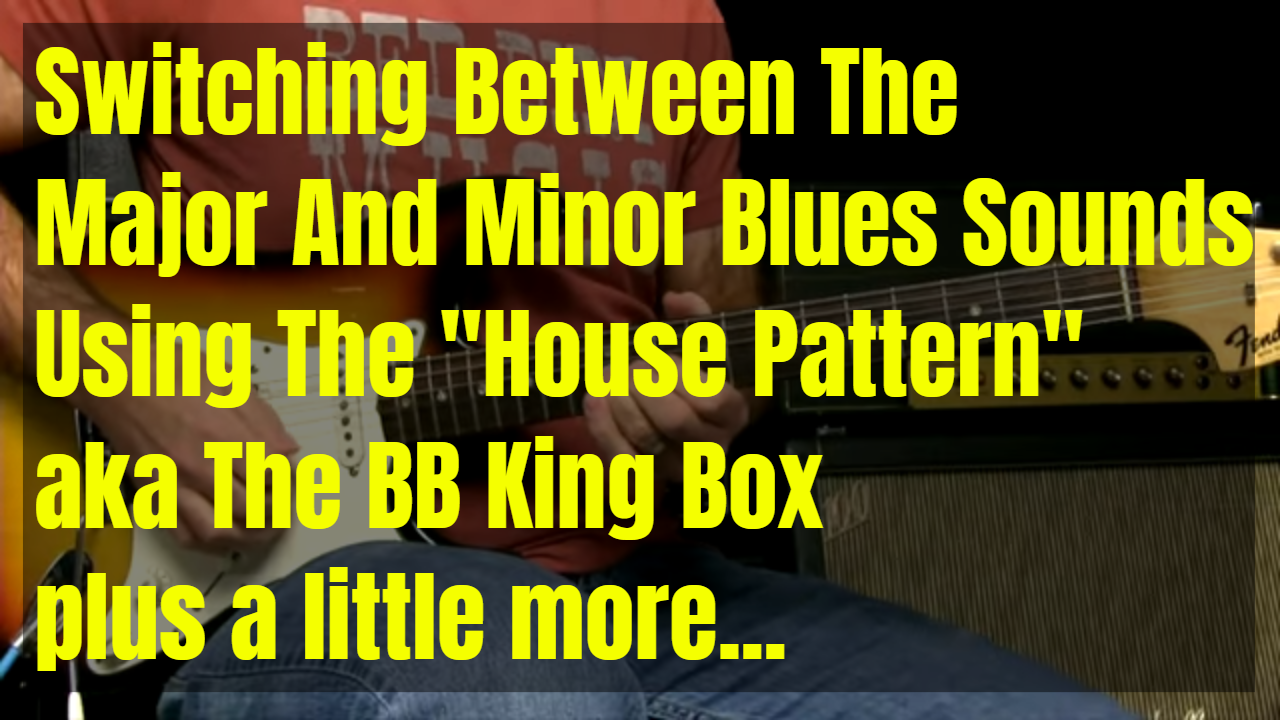This is one of those lessons that is more of a “move” and not a specific “lick”…
Many blues players know that one of your options when blues soloing is to use the major pentatonic or major blues sound over the I chord in the 12 bar blues progression…
While continuing to use the minor pentatonic or minor blues sound over the IV and the V chord in the 12 bar (or 8 bar) blues progression.
However, that’s more of a solution looking for a problem… the problem is, how do you actually play that!?
There are a lot of answer to that question, but today I’ve got one using one of my personal favorite patterns.

10 replies to "Moving Between Sounds With The House Pattern"
Great info but confusing cause it does not follow the 3 fret major minor rule🤪
CLICK !! Suddenly makes sense. I’ve heard this sound in live and recorded songs before – it’s quite a distinctive sound in the flow, but never knew how it was done. Thanx much Griff…AGAIN.
Interesting that you can also do the exact opposite — play the minor pentatonic over the I chord and then switch to the major pentatonic over the IV — and get a very characteristic blues sound.
Awesome lesson. Having the tabs was helpful as was calling out the minor and major shifts. I’m gonna have to noodle on the bends a bit more…kinda get it, kinda don’t.
Thanks as always Griff
Even tho I’d bot one of your blues courses covering this same subject; I never fully understood what was going on. But now, after learning more theory, it all makes sense. Thanks!
Thanks so much Griff. I had to watch this a few times to figure out what’s going on since it didn’t make sense that you only need to shift 2 frets to go from major to minor. Eventually I realized that the major section isn’t a true major pentatonic because the 4th is played instead of the 3rd. This is really part of box 4 then plus that substitution. Still, the 4th is part of the major scale and it works. Understanding the guitar neck never ends!!!
Lessons like this are why you are the best blues guitar teacher. So much music that’s just “right there.” So easily accessible because everything is within a few string and a few frets. Economy of movement while getting so much music out of that chunk of fretboard.
Hey Griff
Been teaching guitar for over 55 years and never quite looked at the move from major to minor in this way. It just goes to show you that you can teach an old dog new tricks. Please keep including more advanced lessons for us old dogs, I will definately pass on your wisdom to my sudents. Thanks
Terrific lesson, Griff! This is such a powerful, visual, and simple method to learn how to play the important major and minor pentatonic notes over the I, IV and V dominant 7th chords.
Can you please build on this lesson to show some ways to play the “blue note” in an among the house pattern – and where it would work the best? Thanks!
Great lesson Griff! Very eye opening.